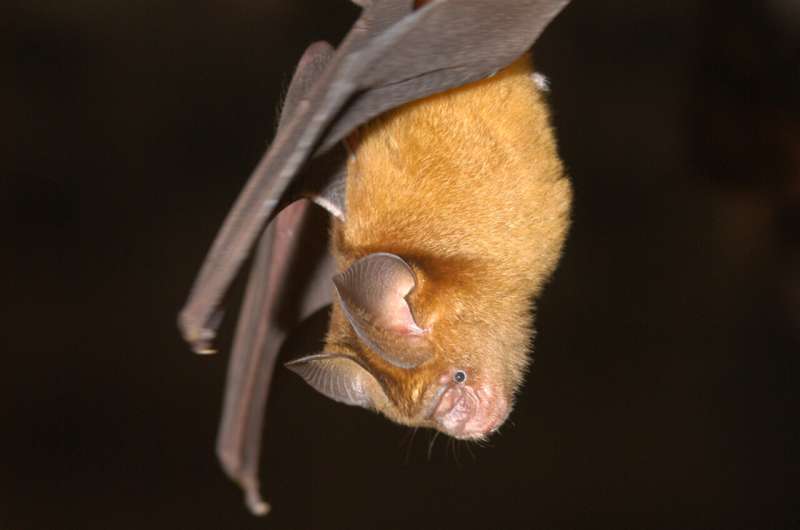This article has been reviewed according to Science X's editorial process and policies. Editors have highlighted the following attributes while ensuring the content's credibility:
fact-checked
peer-reviewed publication
proofread
Study investigates coronavirus dynamics in bats: Lower biodiversity means more pathogens

The loss of biodiversity poses a challenge for nature and humans alike. A study led by Ulm University shows that a decline in biodiversity promotes the spread of potentially zoonotic pathogens.
The research team, which included Berlin virologist Professor Christian Drosten, investigated how changes in the composition of bat communities affect the spread of coronaviruses. The study was published in the journal Nature Communications.
The West African country of Ghana is known for its sheer abundance in animal species, including its bat populations. However, climate change and increased human encroachment into nature, such as deforestation, threaten the biodiversity in this Sub-Saharan region. A study led by biologists from Ulm University offers insights into the far-reaching ecological and health-related consequences of changes in the composition of species communities.
Specifically, the international research team, which involved scientists from Germany, the Czech Republic, Australia and Ghana, analyzed how the composition of cave-roosting bat communities affects the spread of coronaviruses. Over the course of two years, the team determined the species of 2,300 bats across five caves in Ghana and analyzed their fecal samples for viral infections.
"Because many of the bat species are morphologically almost indistinguishable, we had to use molecular DNA fingerprinting techniques," explain the two lead authors of the study, Dr. Magdalena Meyer and Dr. Dominik Melville from the Institute of Evolutionary Ecology and Conservation Genomics at Ulm University.
"We caught the animals with nets, carefully measured, weighted them and took fecal samples before releasing them straight after," explains Professor Marco Tschapka. The bat expert works at the same institute and has led the field work in Ghana. The morphological and genetic analyses identified which bat species were present in the investigated populations and which of them are more frequently infected with pathogens.
The collected fecal samples from the cave-dwelling bats were then screened for coronavirus infections at the Charité in Berlin under the direction of Berlin virologist Professor Christian Drosten, who has been working with the Ulm ecologists for many years.
We know that viruses are adapted to infected potential host species with varying success and that their transmission thus varies depending on the host. In bats, too, some species are particularly "competent" while others are less "competent" hosts.
"Our study revealed that bat communities with decreased diversity were dominated by disturbance-tolerant species. Unfortunately, these also happen to be the 'competent' species that are more susceptible to the investigated viruses and thus transmit them rather easily," says Professor Simone Sommer, head of the Institute of Evolutionary Ecology and Conservation Genomics at Ulm University, who coordinated the study.
As a result, the infection risk was higher in less diverse bat colonies consisting of more competent hosts. This phenomenon was evident for two particular coronavirus variants: The so-called alpha-CoV 229E-like variant, which resembles a human cold virus, and the beta-CoV 2b variant, which is related to the SARS coronaviruses.
"Our results align with the so-called One Health approach. It suggests that there is a close link between the health of environment, animals and humans," says Sommer. The study shows how changes in the species composition of wild animals—triggered by human encroachment into their habitats—could promote the spread of pathogens.
In addition to guarding against future pandemics, protecting bats is also important for ecological reasons since this diverse group of animals provides a wide range of ecosystem services: They regulate insect populations, pollinate plants and spread their seeds. Preserving and protecting their habitats is therefore not only vital to maintain such ecosystem services, but aids in pandemic prevention.
More information: Magdalena Meyer et al, Bat species assemblage predicts coronavirus prevalence, Nature Communications (2024). DOI: 10.1038/s41467-024-46979-1
Journal information: Nature Communications
Provided by University of Ulm
















